Just want to remind people that the backroad to the Pai Road (1095) from the top of the north Samoeng loop is now nearly completely paved. There is a turnoff heading north from the 4021 between Tung Ting and Pa Laan going first to Mae Phae where there is a Royal Project. Follow the main road through Mae Pae to a large signpost veering north again. Just follow the road straight and you will get to Pa Phae on the 1095. There are only a few kilometers remaining that are unpaved, sections that are a bit bumpy but relatively flat. This is a great forest meander with a few traditional Khon Muang villages as well.
The Samoeng Loop - Pottering around
- Thread starter DavidFL
- Start date
Install the app
You are using an out of date browser. It may not display this or other websites correctly.
You should upgrade or use an alternative browser.
You should upgrade or use an alternative browser.
Cruising along on the south side

The Phu Jaya

& Ive been past a hundred times, but today I paid attention to the 360 degree Revovling Cafe & Restaurant sign

No matter how many times you ride the Samoeng Loop there is always a surprise or something new.
Not that the Phua Jaya is something new, its actually been there a long time, but sort of tucked away off the road on a corner, so you don't pay it a lot of attention as you're busy watching the road if you're riding.

Up the driveway, park your bike & they have a nice deck outside.

and it really is a nice spot to kickback, watch the world, cars n bikes go by down below.

So where's the revolving cafe section?
Well it's the aircon room above the deck, that you can chill out in

The aircon is damn cool inside & if the heat bothers you at all, then pop inside

it feels a bit like a giant dolls house I thought.
Obviously a nice spot for some on a Sunday to genuinely chill out at.
We sat down had a beer & nothing was going on. Then suddenly there was a bit of a jolt & oops the world was slowly turning.
So we sat there & looked out the door & watched the resort & restaurant swing by



360 dehrees later we were sitting there loking at the froint entrance & deck again

we'd done a 360 without moving or spilling any beer.
OK thats it. The kids will like it I guess. Something different I thought & I will probably go back again, but with the GF as it strikes me as a cute girly thingy.
The Phu Jaya has rooms as well & maybe worth a night for some.
Check it out sometime
The 360 Cafe by Phu Jaya Resort
For the GPS fanatics: N18.78163 E98.85043
It's also on the GTR Mae Sa Valley Samoeng Loop map

The Phu Jaya
& Ive been past a hundred times, but today I paid attention to the 360 degree Revovling Cafe & Restaurant sign
No matter how many times you ride the Samoeng Loop there is always a surprise or something new.
Not that the Phua Jaya is something new, its actually been there a long time, but sort of tucked away off the road on a corner, so you don't pay it a lot of attention as you're busy watching the road if you're riding.
Up the driveway, park your bike & they have a nice deck outside.
and it really is a nice spot to kickback, watch the world, cars n bikes go by down below.
So where's the revolving cafe section?
Well it's the aircon room above the deck, that you can chill out in
The aircon is damn cool inside & if the heat bothers you at all, then pop inside
it feels a bit like a giant dolls house I thought.
Obviously a nice spot for some on a Sunday to genuinely chill out at.
We sat down had a beer & nothing was going on. Then suddenly there was a bit of a jolt & oops the world was slowly turning.
So we sat there & looked out the door & watched the resort & restaurant swing by
360 dehrees later we were sitting there loking at the froint entrance & deck again
we'd done a 360 without moving or spilling any beer.
OK thats it. The kids will like it I guess. Something different I thought & I will probably go back again, but with the GF as it strikes me as a cute girly thingy.
The Phu Jaya has rooms as well & maybe worth a night for some.
Check it out sometime
The 360 Cafe by Phu Jaya Resort
For the GPS fanatics: N18.78163 E98.85043
It's also on the GTR Mae Sa Valley Samoeng Loop map
Attachments
-
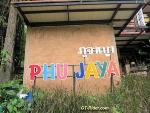 GTR%20-%20IMG_9401.jpg106.3 KB · Views: 134
GTR%20-%20IMG_9401.jpg106.3 KB · Views: 134 -
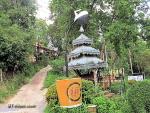 GTR%20-%20IMG_9402.jpg159.5 KB · Views: 150
GTR%20-%20IMG_9402.jpg159.5 KB · Views: 150 -
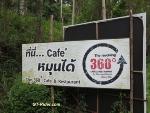 GTR%20-%20IMG_9404.jpg94.2 KB · Views: 151
GTR%20-%20IMG_9404.jpg94.2 KB · Views: 151 -
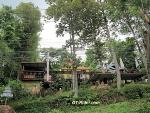 GTR%20-%20IMG_9405.jpg152.3 KB · Views: 137
GTR%20-%20IMG_9405.jpg152.3 KB · Views: 137 -
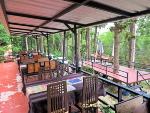 GTR%20-%20IMG_9411.jpg125.1 KB · Views: 151
GTR%20-%20IMG_9411.jpg125.1 KB · Views: 151 -
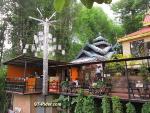 GTR%20-%20IMG_9408.jpg126.5 KB · Views: 158
GTR%20-%20IMG_9408.jpg126.5 KB · Views: 158 -
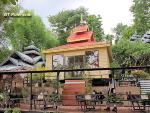 GTR%20-%20IMG_9407.jpg127.7 KB · Views: 178
GTR%20-%20IMG_9407.jpg127.7 KB · Views: 178 -
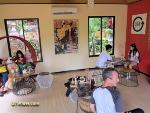 GTR%20-%20IMG_9413.jpg92.7 KB · Views: 134
GTR%20-%20IMG_9413.jpg92.7 KB · Views: 134 -
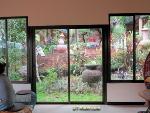 GTR%20-%20IMG_9414.jpg109.7 KB · Views: 181
GTR%20-%20IMG_9414.jpg109.7 KB · Views: 181 -
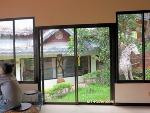 GTR%20-%20IMG_9416.jpg95.5 KB · Views: 137
GTR%20-%20IMG_9416.jpg95.5 KB · Views: 137 -
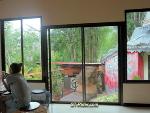 GTR%20-%20IMG_9417.jpg90.9 KB · Views: 172
GTR%20-%20IMG_9417.jpg90.9 KB · Views: 172 -
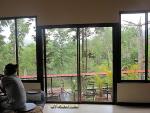 GTR%20-%20IMG_9418.jpg96.1 KB · Views: 155
GTR%20-%20IMG_9418.jpg96.1 KB · Views: 155 -
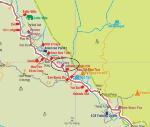 GTR-PhuJaya.jpg47.8 KB · Views: 172
GTR-PhuJaya.jpg47.8 KB · Views: 172
Another wander...but a rainy day & a flat camera battery. So only a few phone snaps.
Wat Inthrawat, known locally as Wat Ton Khwen, is one of the very few remaining wooden temples in its original state in Chiang Mai province.
Under the care of the Fine Arts Department it is renowned as one of the finest examples of classic Lanna style architecture in Northern Thailand.
The temple elegant was built in 1858 in Lanna style with Thai Lü influence. It is surrounded on three sides by an open pavilion.
It has a viharn with a typical Lanna style steep three tiered roof & large stylized Naga serpents on the top of the roof ends .
Singha Lions guard the entrance to the temple, set in rice paddies & a compound with beautiful tall palm trees.
View attachment 67073
View attachment 67074
View attachment 67075
View attachment 67076
View attachment 67077
A report in today's Bangkok Post on Wat Ton Kwen,
Amid many concrete temples in the northern province of Chiang Mai, very few maintain the original design and concept of a traditional northern temple. Among the rare ones is Wat Intharawat, better known as Wat Ton Kwen, in Hang Dong district, which truly represents Lanna architecture.
The temple is worthy of exploration by everyone, not just culture vultures. It was named by the Association of Siamese Architects as the most outstanding piece of architecture in 1989. You may feel familiar with it because its prayer hall is copied as Hor Kham Luang of the Royal Park Rajapruek and has served as the setting for many popular movies and TV series.
"This temple is comparable to Mount Meru, the centre of the universe, surrounded by a
The temple's religious function zone consists of the vihara, a gallery, or sala bat, and a four-porched pavilion. The major things are the vihara and pavilion.
The vihara is rectangular in shape and has a three-tiered roof at the front and a twotiered roof at the rear, both paved with brown glazed tiles. It is made of wood like many other prayer halls in the North of Thailand. Its gables, roof ridges, brackets and other parts are adorned with fine stucco motifs and wood carvings with a rare kind of colourful mirror called krajok chuen -thin lead plates coated with coloured mercury. The almost-extinct art of making krajok chuen is being revived by northern craftsmen. Outstanding features are the foliage and Naga's head motifs on the roofs and gables and the stucco deva sculptures inside the vihara. The interior walls of the vihara are decorated with gilded red lacquer and murals which are mostly faded.
The principal Buddha statue in the Subduing the Mara posture is older than the temple and believed to have been relocated from another temple. It dates to the middle of the Lanna period since it reflects the influence of Sukhothai art with fine curves and lines. It is placed on a busabok (squared pavilion), depicting the Naga. The wall behind it is adorned with arches for containing metal Buddhist votive tablets. The votive tablets include those in a bodhi leaf shape and the Subduing the Mara posture and those covered with the Naga motifs.
The pavilion, built in 1858, is an open-spaced wooden structure supported with round columns. The gable is adorned with stucco art and the two-layered roof is paved with local terracotta tiles called krabuang din sor, which are curvy and allow birds to cling onto them easily. In the middle of the roof is a small pavilion called prasart fuang, commonly found in the Northeast. The way the pavilion's components are assembled with teak dowels and handmade nails is a unique local construction technique.
It is the only four-porched pavilion in the shape of a mondop in the North. Inside it are a sedan chair for enshrining the Buddha's relics and a traditional pipe for pouring scented water in order to bathe the relics.
In the past, there was a tradition for each Chiang Mai ruler to take the Lord Buddha's relics from Wat Phra That Si Chom Thong to Muang Chiang Mai. On the way, the procession would stop at Wat Ton Kwen for a week and the relics would be kept in the temple's pavilion during this period and be worshipped by locals. Next destinations were Wat Suan Dok and Wat Phra That Doi Suthep. Last year, this tradition called hae that khao muang was reintroduced by Chiang Mai University's fine arts faculty.
Restoration of the temple was undertaken in 1978, 1987 and from 2002-2003, which included the conservation of murals, the repair of a temple wall and minor repair of the vihara.
converted by Web2PDFConvert.com
This temple was named after Ton Kwen, a kind of plant called takhob pa in Thai and Madagascar plum, batoka plum, governor's plum or Indian plum in English. It yields flowers and new leaves from December to April. Fruit becomes ripe from March to July and is eaten by birds, and in this way its seeds are spread. Besides Ton Kwen, the temple compound has tall trees like toddy palm trees which have served as a landmark for travellers to see the temple from a long distance.
It is not an overstatement to say that anyone wanting to see a masterpiece of Lanna architecture must visit Wat Ton Kwen.
The temple is worthy of exploration by everyone, not just culture vultures. It was named by the Association of Siamese Architects as the most outstanding piece of architecture in 1989. You may feel familiar with it because its prayer hall is copied as Hor Kham Luang of the Royal Park Rajapruek and has served as the setting for many popular movies and TV series.
"This temple is comparable to Mount Meru, the centre of the universe, surrounded by a
The temple's religious function zone consists of the vihara, a gallery, or sala bat, and a four-porched pavilion. The major things are the vihara and pavilion.
The vihara is rectangular in shape and has a three-tiered roof at the front and a twotiered roof at the rear, both paved with brown glazed tiles. It is made of wood like many other prayer halls in the North of Thailand. Its gables, roof ridges, brackets and other parts are adorned with fine stucco motifs and wood carvings with a rare kind of colourful mirror called krajok chuen -thin lead plates coated with coloured mercury. The almost-extinct art of making krajok chuen is being revived by northern craftsmen. Outstanding features are the foliage and Naga's head motifs on the roofs and gables and the stucco deva sculptures inside the vihara. The interior walls of the vihara are decorated with gilded red lacquer and murals which are mostly faded.
The principal Buddha statue in the Subduing the Mara posture is older than the temple and believed to have been relocated from another temple. It dates to the middle of the Lanna period since it reflects the influence of Sukhothai art with fine curves and lines. It is placed on a busabok (squared pavilion), depicting the Naga. The wall behind it is adorned with arches for containing metal Buddhist votive tablets. The votive tablets include those in a bodhi leaf shape and the Subduing the Mara posture and those covered with the Naga motifs.
The pavilion, built in 1858, is an open-spaced wooden structure supported with round columns. The gable is adorned with stucco art and the two-layered roof is paved with local terracotta tiles called krabuang din sor, which are curvy and allow birds to cling onto them easily. In the middle of the roof is a small pavilion called prasart fuang, commonly found in the Northeast. The way the pavilion's components are assembled with teak dowels and handmade nails is a unique local construction technique.
It is the only four-porched pavilion in the shape of a mondop in the North. Inside it are a sedan chair for enshrining the Buddha's relics and a traditional pipe for pouring scented water in order to bathe the relics.
In the past, there was a tradition for each Chiang Mai ruler to take the Lord Buddha's relics from Wat Phra That Si Chom Thong to Muang Chiang Mai. On the way, the procession would stop at Wat Ton Kwen for a week and the relics would be kept in the temple's pavilion during this period and be worshipped by locals. Next destinations were Wat Suan Dok and Wat Phra That Doi Suthep. Last year, this tradition called hae that khao muang was reintroduced by Chiang Mai University's fine arts faculty.
Restoration of the temple was undertaken in 1978, 1987 and from 2002-2003, which included the conservation of murals, the repair of a temple wall and minor repair of the vihara.
converted by Web2PDFConvert.com
This temple was named after Ton Kwen, a kind of plant called takhob pa in Thai and Madagascar plum, batoka plum, governor's plum or Indian plum in English. It yields flowers and new leaves from December to April. Fruit becomes ripe from March to July and is eaten by birds, and in this way its seeds are spread. Besides Ton Kwen, the temple compound has tall trees like toddy palm trees which have served as a landmark for travellers to see the temple from a long distance.
It is not an overstatement to say that anyone wanting to see a masterpiece of Lanna architecture must visit Wat Ton Kwen.
